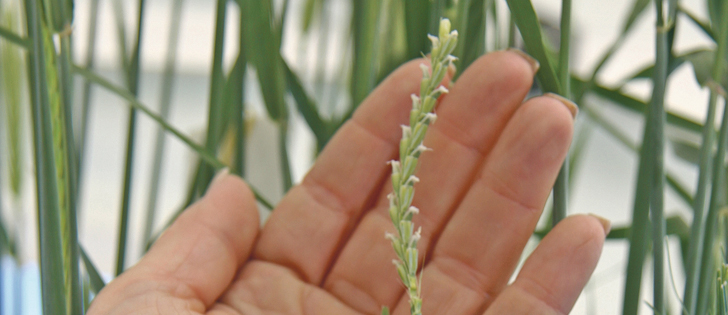LACOMBE, Alta. — Selecting a new grain variety is like holding a casting call for actors in which hundreds try out but only one gets the part.
The wheat, triticale and barley breeding programs at the Alberta Crop Development Centre near Lacombe look at thousands of lines of potential candidates to register the next new and improved variety with better disease resistance, higher yields and desirable agronomic qualities.
“It can take 10 to 15 years to bring a single crop to a cultivar or a variety,” germplasm technician Laura Hope said during a field day held last month.
Read Also

Huge Black Sea flax crop to provide stiff competition
Russia and Kazakhstan harvested huge flax crops and will be providing stiff competition in China and the EU.
New cultivars are crossed with a steady hand using tweezers to transfer pollen between male and female plants.
Staff may harvest 5,000 to 6,000 lines in a given year and select 1,000 for further trials, said operations manager Mike Oro.
“It is all about getting the numbers down as quickly as possible and identifying the plant material,” he said.
The plant breeders also work with scientists in other countries to test for disease resistance. Researchers include Canadians but they also screen for diseases in Washington, Mexico, Argentina, Uruguay, Brazil, Japan and Europe.
“If we can start screening for yield and disease resistance sooner, it frees up better quality breeding lines through our programs,” Hope said.
Added Oro: “From the time that first cross is made till we get to this point, it is a 10 to 15 year process with lots of wheels turning and lots of people contributing to the varieties.”
All the plots are harvested and grain is screened for different traits. Potential cultivars are subjected to near infrared technology and DNA analysis to mark the most desirable traits.
Quality is assessed with NIR technology scanning for protein, moisture content and about 50 other components desired in the feed, food and malt sectors.
“The breeders will use it to select screened samples,” said research scientist Lori Oatway.
“We are making specific varieties for specific markets, so it has become quite detailed.”
About 80 grams of grain are scanned using light waves on two machines that can look at up to 40,000 samples in four months.
Researchers look for beta glucan and animal feed values when assessing barley samples.
“Feed is a huge part of our program because of the size of Alberta’s industry,” she said.
“We have a very strong animal feed industry.”
Her lab can also look at silage and forage to measure digestibility, protein and starch.
On the food side, the centre works with companies such as Sunny Boy cereal.
Barley has an approved claim for heart health, and the Alberta-based company wants to add extra beta glucan to its products to provide enough of the soluble fibre to have a health benefit.
Malt barley analysis is done in co-operation with Rahr Malting and Canada Malting to seek out quality attributes. Barley can affect the taste of beer. This is a desirable trait for craft brewers seeking something different but they also want to avoid off tastes.
Brewers have been slower to adopt some of these new barley varieties because they have a different flavour.
“It is very difficult and it is very subjective,” said Oatway.


















